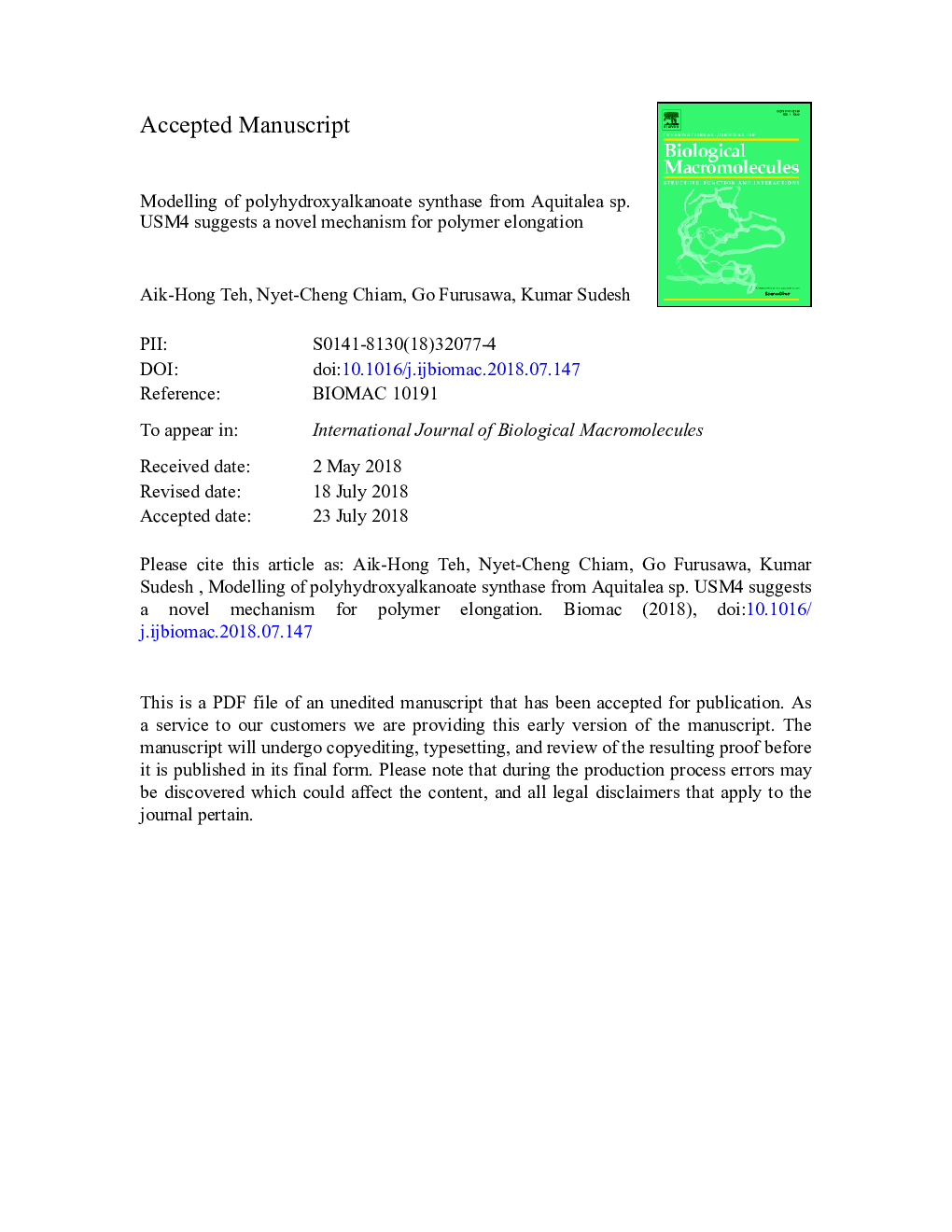| کد مقاله | کد نشریه | سال انتشار | مقاله انگلیسی | نسخه تمام متن |
|---|---|---|---|---|
| 8326742 | 1540195 | 2018 | 24 صفحه PDF | دانلود رایگان |
عنوان انگلیسی مقاله ISI
Modelling of polyhydroxyalkanoate synthase from Aquitalea sp. USM4 suggests a novel mechanism for polymer elongation
دانلود مقاله + سفارش ترجمه
دانلود مقاله ISI انگلیسی
رایگان برای ایرانیان
کلمات کلیدی
موضوعات مرتبط
علوم زیستی و بیوفناوری
بیوشیمی، ژنتیک و زیست شناسی مولکولی
زیست شیمی
پیش نمایش صفحه اول مقاله

چکیده انگلیسی
Polyhydroxyalkanoate (PHA) synthase, PhaC, is a key enzyme in the biosynthesis of PHA, a type of bioplastics with huge potential to replace petroleum-based plastics. While two structures have been determined, the exact mechanism remains unclear partly due to the absence of a tunnel for product passage. A model of the class I PhaC from Aquitalea sp. USM4, characterised with Km of 394â¯Î¼M and kcat of 476â¯sâ1 on 3-(R)-hydroxybutyryl-CoA, revealed a three-branched channel at the dimeric interface. Two of them are opened to the solvent and are expected to serve as the putative routes for substrate entrance and product exit, while the third is elongated in the class II PhaC1 model from Pseudomonas aeruginosa, indicating a role in accommodating the hydroxyalkanoate (HA) moiety of a HA-CoA substrate. Docking of the two tetrahedral intermediates, formed during the transfer of the growing PHA chain from the catalytic Cys to a new molecule of substrate and back to Cys, suggests a common elongation mechanism requiring the HA moiety of the ligand to rotate ~180°. Substrate specificity is determined in part by a bulky Phe/Tyr/Trp residue in the third branch in class I, which is conserved as Ala in class II to create room for longer substrates.
ناشر
Database: Elsevier - ScienceDirect (ساینس دایرکت)
Journal: International Journal of Biological Macromolecules - Volume 119, November 2018, Pages 438-445
Journal: International Journal of Biological Macromolecules - Volume 119, November 2018, Pages 438-445
نویسندگان
Aik-Hong Teh, Nyet-Cheng Chiam, Go Furusawa, Kumar Sudesh,